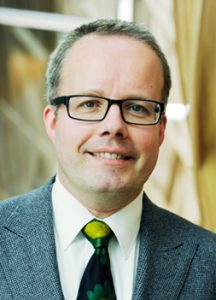
Hans Biemans MSc MiF
Unternehmen/Organisation
ING AG, The Netherlands
mailto: hans.biemans@ing.com
www.ing.com
Kurz-CV/Curriculum vitae
Hans Biemans MSc MiF (1966) is Head of Sustainable Markets at ING AG. He has previously worked at Rabobank since 2002 and has integrated sustainability in the mainstream business of the group (capital markets, retail and wholesale finance, private banking, private equity, leasing, and real estate). Furthermore, he has also explored business development opportunities in areas such as renewable energy, bioeconomy, green building, climate change, and brownfield remediation. Biemans holds a Master in Molecular Sciences from Wageningen Agricultural University as well as a Master in Financial Economics from Tilburg University (Tias), and studied Ethics at Utrecht University, the Netherlands. Until 2002, Biemans was vice president of the structured reinsurance department at Eureko Reinsurance and sales manager for Interpolis (Achmea Group) corporate clients.
Abstract
The chapter begins with the observation that we live in an era of social responsibility and transparency. Companies have started to incorporate sustainability in their core business strategies. Almost every company has green and fair products or production processes. We also live in a world that is becoming more transparent. How will the banking industry play a role in this new era of social responsibility and transparency? And what will the future sustainability strategies of banks look like? The chapter describes how the moral development of a bank goes through various levels. At level I, banks have traditional moral values and the policy is to avoid controversial companies. This is driven by the protection of the reputation and the credit risk of the bank. At level II, the self-orientation is replaced by an outside orientation. Banks want to comply with external norms and values and want to be good citizens. At level III, the absolute and universal norms of level II will be replaced by relative, more context-dependent norms. Banks use the norms developed by the sustainability leaders among their clients as a general guideline and want other clients in these sectors to comply with these same norms. The chapter describes how sustainability ratings and certifications play a role in this paradigm shift. The chapter concludes that sustainability policies of banks shift from a focus on controversial companies to a focus on sustainability leaders who drive the change, and describes what this paradigm shift will look like in various business lines of banks.
Quelle: Springer Verlag 2018